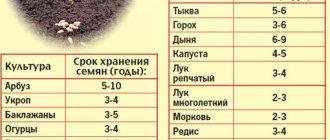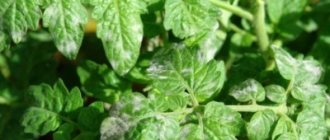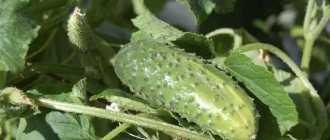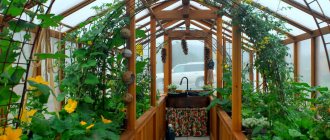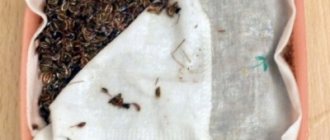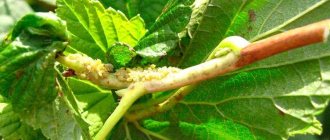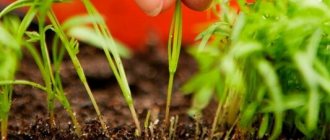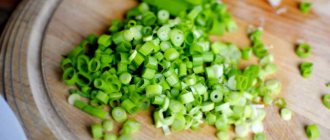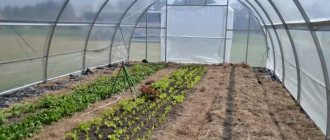There can be many reasons for poor germination of seeds - their age, thick shell, essential oils that prevent swelling, reduced immunity, etc. Fortunately, gardeners have long invented their own life hacks to speed up seed germination.
These methods are different - physical, mechanical, chemical, thermal - but they are all designed to do the same thing: at the stage of pre-planting preparation, increase the percentage and speed of seed germination, and as a result, get a faster and larger harvest. So, how to speed up seed germination? Choose from the methods presented below (both traditional and very exotic) the one that suits you!
Method 1. Soaking seeds in a growth stimulator
The easiest and most logical thing to do is to soak the seeds before germination in one of the industrial growth stimulants that help the plant cope with stress and are designed to activate all its biological processes, including seed germination.
Usually these are synthetic analogues of phytohormones, but there may also be solutions of microelements, as well as natural biostimulants. Examples of such drugs that have proven themselves are Epin Extra, Energen Aqua, Zircon, Novosil, succinic and aspartic acids, humates, gibberellin, heteroauxin, etc.
- Succinic acid - benefits for plants and instructions for use of the drug
For growth, productivity and rooting, against disease and stress - everything you wanted to know about succinic acid!
Data on the preparation, consumption, and soaking time of the seed differ for these preparations, so carefully read the instructions on the packaging.
Nutrition or stimulation?
One definitely won’t hurt the other. Half an hour or an hour in potassium permanganate or vodka diluted with water, then in Epin or succinic acid. There are many options. For disinfection, nutrition and stimulation use:
- mineral fertilizers (urea, potassium nitrate,
- hydrogen peroxide;
- wood ash decoction;
- Kornevin;
- potassium humate;
- soda;
- onion peel decoction;
- Agave juice;
- chlorella (effective for plants in suspension form)
- stimulants "Zircon", NV-101.
Seeds will germinate in clean water. But useful nutritional supplements will give the sprouts strength, which is important during the first time in the garden, when the last frosts are possible. They will increase resistance to diseases and pests, making care easier. They help achieve the main goal - to get a harvest faster.
Method 2: Soak seeds in compost tea
You can also use AKCH (aerated compost tea) to soak seeds to speed up their germination. This is the same growth stimulator, but prepared with your own hands. Its effectiveness is based on a high concentration of microorganisms beneficial to the plant, however, to prepare a magical solution, you will have to tinker.
You will need:
- non-chlorinated water (rain, river, melted snow) – 2 l;
- sweetener (molasses, kvass wort, molasses, or even jam) – 10 ml;
- mature compost – 70 g (a glass of dry matter).
Mix all the ingredients in a three-liter jar, into which then lower the spray tubes of a compressor (for example, an aquarium or a specialized one from a farm store) for aeration. The compressor is left to work for a day - the finished “tea” should have the smell of fresh earth and abundant foam.
Then place the bag of seeds in the ACH for a day - they should swell and be “overgrown” with microorganisms and compost particles. Some gardeners advise not to even wait until the end of the process, but to hang a bag of seeds on a thread in the “tea” being prepared at the stage of aeration, so that the seeds receive an additional shake. Such seeds germinate an order of magnitude faster and more efficiently than untreated ones.
According to the above scheme, compost infusion can be prepared without aeration - simply mix all the components. It will contain fewer microorganisms beneficial to the plant, but the solution will still remain an effective means for accelerating seed germination.
Sesame
Sesame sprouts contain an extremely high amount of calcium (up to 1474 mg per 100 g), which makes them indispensable in the diet of people suffering from lesions of the musculoskeletal system. There is evidence that their regular use not only helps strengthen bones, hair, teeth and nails, but even helps restore damaged tooth enamel.
The inclusion of sesame seedlings in the diet is recommended for patients who have recently suffered fractures, patients with arthrosis, osteochondrosis, and arthritis. It is important for women to eat this product to prevent osteoporosis. It is necessary for pregnant women, lactating women, as well as children during the period of changing teeth and active bone growth.
In terms of the content of vitamins, microelements and calcium, flax seed sprouts are similar to sesame seeds. In addition, they contain substances that provide a slimy consistency, due to which they have unique properties. Flaxseeds help cleanse the digestive tract of toxins, improve the condition of mucous membranes, and reduce the intensity of hemorrhoid symptoms.
Flax sprouts are recommended for use in case of weakened tissues of bones, teeth and hair, impaired tone of the walls of blood vessels, decreased immunity, problems with performance and memory.
The taste of soybean sprouts is similar to pickled asparagus - juicy, slightly sour, with a hint of spiciness. They contain essential amino acids, proteins, vitamins and minerals.
The inclusion of soybean sprouts in the daily diet ensures the removal of excess fluid from the body, reducing the volume of subcutaneous fat deposits, and activating protein metabolism. The choline present in their composition helps restore nervous tissue, which has a beneficial effect on memory and the ability to concentrate. Lecithin improves the condition of patients suffering from heart disease, pancreas and liver problems. Pectins help inhibit the growth of malignant tumors.
Soaking seeds in vodka
However, seeds are soaked for rapid germination not only in specialized solutions intended specifically for this. After all, there is not always a good agricultural store nearby with a wide selection of drugs. Therefore, cunning summer residents have adapted to use for these purposes liquids that would seem to be completely unsuitable for this purpose. For example, an alcohol solution or vodka.
To reduce germination time, seeds are soaked in alcohol for 15-20 minutes and then rinsed thoroughly. Such “bathing,” they say, helps not only the most difficult to germinate, but even expired seeds - 100% germination, of course, is not promised, but it’s better than nothing at all, isn’t it?
How many days does it take for pepper to sprout after planting seeds, watering rules
After planting, pepper seeds take longer to germinate than other crops, which is why it is called “slow-witted.” Growing strong and healthy seedlings is not an easy task. In order not to fail, you need to know the rules for preparing seeds and watering seedlings, and the details of care.
Vizazh-2.ru reports this
Pepper is a fastidious plant. To obtain good germination, it is necessary to take into account the variety, quality of planting material, temperature and humidity requirements. It is also important to know how to water the seedlings so that they do not dry out and rot.
Soaking seeds in natural nutrient mixtures
These can be solutions of various natural remedies that saturate the seeds with nutrients and help them wake up faster.
Choose:
- honey - 1 tsp in solution. honey per glass of water, the seeds are kept for 24 hours;
- aloe juice - in a solution of freshly squeezed aloe juice and water (1:1), the seeds are also soaked for a day (necessarily in a non-metallic container!);
- mushroom decoction - dried mushrooms are poured with boiling water, and after it has cooled, the resulting mixture is poured over the seeds for 6 hours;
- potato juice - a couple of potato tubers are frozen in the freezer, then thawed at room temperature and the juice is squeezed out of the softened tuber, in which the seeds are kept for 6-8 hours;
- infusion of ash - in a solution prepared from 2 tbsp. ash diluted in 1 liter of water, the seeds of all vegetable crops are soaked for 3-6 hours (the infusion is preliminarily kept for 2 days);
- Ash - what kind of fertilizer is it and how to use it correctly
Ash is not just a fireproof residue after combustion, but also a valuable microfertilizer. Our material contains everything about how ash is useful for plants, how to use ash as a fertilizer, how to dilute ash for feeding, what spraying with an ash solution is...
How to germinate seeds for seedlings at home: soaking
Beginner gardeners often have failures when growing seedlings from seeds: the seedlings either turn out weak or even die. In most cases, the explanation is simple - failure to comply with the regime necessary for growing seedlings. How to germinate seeds at home so as not to encounter such a problem? To do this, you need to know the biology of vegetable crops. After all, a seed, before becoming a young plant, must go through several stages - swelling, germination, the germination stage, at each of which it must be provided with optimal conditions. If you focus on the needs of plants, you will grow powerful seedlings.
On the page devoted to storing seeds, it was especially emphasized that they must have a certain moisture content (8-12%). There are many peculiarities of growing seedlings. In order for the seed to “wake up” and prepare for germination, it must swell, that is, it must be in contact with water. The seeds are saturated with moisture, and the supply of nutrients, which is still “dormant,” is awakened and activated. In this case, the inhibitors that ensured the stability of the dry seed, that is, prevented germination, are transferred into the water. Thus, initially the seeds only need moisture, even temperature and the presence or absence of oxygen are not so important. It is not for nothing that the swelling stage is correlated with a special technological procedure - soaking. There is no need to be afraid that when soaking during germination, the seeds, being immersed in water, will suffocate, since as long as their shell remains intact, they do not require oxygen.
Soaking seeds in a thermos with hot water
If you are afraid of dipping seeds into unknown substances to regulate the germination rate, you can get by with plain water without any additives. True, then we will have to experiment with its temperature - we must somehow wake up the “lazy” seeds!
For example, placing them in a thermos with hot (45-50°C) water for 20 minutes. Then the seeds are taken out, rinsed in cool running water and dried. Done - hot water helped your seeds get rid of excess oils in the shell that prevent water flow and swelling.
How to eat sprouts
Sprout seeds are a natural food supplement. They cannot replace food, but can only be added to it. The product goes well with cereals, fruits, vegetables, herbs, cottage cheese and soft cheese. They can be added to salads and smoothies. In order for them to bring maximum health benefits, 2 types of seed sprouts should be used simultaneously. It is recommended to change the set every 2 months.
The seeds should not be swallowed, but should be chewed thoroughly. You can also use them in crushed form.
The maximum daily allowance for an adult is 70 grams. product. If you are just beginning to get acquainted with sprouts, then you should start with 1 tsp. and gradually increase the volume.
Soaking seeds when changing contrasting temperatures
The method of long-term changes in contrasting temperatures, which increases the likelihood of seed germination, is based on the same principle. Now the seeds will be in a cold and hot environment alternately, and even over a period of time. This process will help the seeds of those plants that take too long to germinate.
For example, you can keep seeds on a damp mat or in hydrogel for 2-3 weeks in a warm place with a temperature of about 20°C, and then put them in the refrigerator for a month at a temperature of 3-4°C. The opposite option is also possible, when the seeds are first kept in the refrigerator for 1-2 weeks, and then placed in a warm room until planting.
Preparatory stages that stimulate germination
Preliminary preparation, especially necessary for slow-germinating seeds, speeds up germination. A single treatment or a whole set of measures to stimulate seedlings:
- soaked in nutrient solutions;
- water procedures in disinfectants for seed disinfection;
- stratification in the refrigerator;
- bubbling of expired and difficult-to-germinate seeds;
- heating with cooling.
After such manipulations, germination proceeds at an accelerated pace. And sometimes the seeds hatch even in the refrigerator, in an artificial winter hut, or in a glass where they are bubbling.
Stratification of seeds in snow or cold soil
In general, any exposure of seeds to altered temperature conditions to accelerate their germination is called stratification.
Above we looked at combined stratification, but there are other varieties of it. For example, cold stratification in snow or cold soil. It is based on the fact that in nature, ripened and fallen seeds do not germinate immediately, but “prepare” for this for quite a long time - first in wet, and then in soil that freezes until spring. Let's try to deceive them by simulating such conditions.
Stratification of seeds in snow or cold soil is that they are mixed with moist soil in a ratio of 1:3, placed in canvas bags or foam polystyrene trays and covered with snow (at least 30 cm thick) on the site or buried in frozen ground to the depth of the shovel bayonet. After about two weeks, the seeds will swell enough to be removed and sown.
The method of sowing slow-germinating seeds directly into cold, damp soil in very early spring works on the same principle.
Here are 6 simple ways to improve and speed up germination of all types of seeds.
1 Break the integrity of a shell that is too thick: scarification
Let's start with the direct approach, scarification. It will not hurt to slightly damage the integrity of the shell for large seeds or seeds with a very hard shell (for example, bean seeds).
It is advisable to rub seeds with a hard shell a little on sandpaper
Use a wide nail file, a piece of sandpaper, a knife or a razor blade to score the outside of the seed. Carefully scrape or cut a portion of the outer shell. Be very careful not to cut too deeply or you will damage the embryo. One way is to place the seeds on a piece of sandpaper in a small container and then shake the container. Whatever method you use, the goal is to remove enough of the peel for the water to saturate the peel and cause the seeds to germinate. The method will help you quickly see shoots of nasturtium, nuts, turnips, beans, and castor beans.
By the way, you can learn how to grow castor seedlings from this master class >>>>>
2 Simulate winter: stratification
For tiny seeds, perennial plants or seeds of trees and shrubs, it is better to use stratification. This process takes a little longer, but simulates winter freeze/thaw cycles. Place the seeds in a growing medium such as perlite or coco, moisten with water (enough to keep the medium moist), then seal it in a small Ziploc bag. Place this bag in the refrigerator (not the freezer) and leave for two weeks. Check the seeds regularly to make sure the substrate hasn't dried out, then place the bag in a cool place for a week. Repeat this cycle for about two months before sowing the seeds. You'll definitely want to start this method well before planting because it takes a long time to prepare the seeds. Without stratification, it is quite difficult to obtain friendly shoots from gentians, cinquefoils, anemones, cereals, primroses, rose hips, and hawthorns.
Why is stratification needed and for which seeds is it best suited >>>>>>>>>>>
3 Moisten and germinate in advance
You can also pre-soak the seeds. Soaking seeds is the easiest way to encourage germination and is great for large, hard, and wrinkled seeds. Place moistened cotton pads in a petri bowl, seeds on top and cover with a lid. The good thing about the bowl is that it does not need to be ventilated, it already has micro-ventilation, which means the seeds will not rot, as could happen in the ground. Well, one can only sympathize with lovers of toilet paper, gauze, cotton wool, rolls and snails - how much hassle they are forced to put up for the sake of who knows what.
For some seeds, dampening can be used instead of scarification, especially if you are concerned about damaging the embryo. Soaking will soften the shells enough to saturate the seeds and begin the germination process. Store-bought seeds are usually too dry and it may take time for the water to penetrate the dry shell. Seeds that you took from your own plants have not been processed, where the hydration process may take less time.
How to sow sprouted tomato seeds, see here >>>>>>
Moisturizing works well on herb seeds containing essential oils in the shell. Anise, dill, lavender, many umbrella crops require pre-soaking.
You can learn how to grow lavender from seeds here >>>>>>>>
4 Check stored seeds for germination
Seeds purchased within a year after planting rarely fail to germinate. However, seeds are often stored from year to year, and if stored incorrectly or for too long, they may lose their viability and germinate poorly when sown. A simple germination test can show whether saved seeds are viable. To test seeds for germination, count a sample of at least twenty-five seeds. Wrap the seeds lightly in a damp paper towel, keeping the paper towel moist but not soggy for five to ten days. Unfold the paper towel and count how many seeds have sprouted. If less than 85-90% of the seeds have sprouted, it is better to throw away the rest and buy new seeds.
The packaging of seeds must contain the date of packaging and expiration date.
5 Change seed sources
If your seeds did not germinate, even with the tips above, it is possible that the seeds themselves were unsuccessful. If the seeds are not stored properly, they may simply not germinate. If the seeds have been stored in a very cold place, they may take some time to wake up. But if you stored them correctly, you probably got a defect.
On the other hand, if seeds from multiple sources are not germinating, you may be using a substrate that is too moisture-intensive or the room temperature is below 25 degrees, in which case you may need something to warm the soil.
Read about how to choose quality seeds here >>>>>
6 Use germination stimulants
Soaking seeds in stimulants
Wherever you get your seeds from, you can improve their germination by using additional stimulants. 7 most popular stimulants:
- 1. Humate +7 iodine
- 2. Ribav-Extra
- 3. Phytozant
- 4. Epin-Extra
- 5. Zircon
- 6. Ecogel
- 7. Aminosol
Natural stimulants
- Aloe juice
- succinic acid
- Hydrogen peroxide solution
- Honey solution
You can learn how to properly use germination stimulants from the article >>>>>>>>>
Germinating seeds on a battery
In addition to cold, there is also warm stratification. In this case, the seeds are laid out on a damp substrate (sponge, coconut substrate, cloth folded in several layers, etc.), placed in a shallow container, covered with another damp layer of cloth or sand, “wrapped” with cling film and placed in a warm place. a place, for example, in the immediate vicinity of a battery.
Depending on the type of plant, the seeds will remain in such a “greenhouse” until they hatch, from several days to several weeks. It is only important to ensure that the temperature does not exceed 28°C, and that the substrate remains moist at all times.
- 3 best ways to stratify seeds
If you want to become an expert in growing flowers and conifers from seeds, master the stratification procedure.
Methods that accelerate seed germination
Not every gardener knows how to speed up seed germination. It is much easier to throw dry seeds into the ground after checking their expiration date on the packaging. For many vegetable growers, this is all they do.
Some people don’t want to tinker with the seed, making preliminary manipulations, while others simply think that nothing much will change from processing. In fact, this is far from the case. Let's try to figure out what techniques accelerate seed germination and is it difficult to carry out such treatment?
Soak
Photo: Soaking tomato seeds
The most common technique that has been recognized and used by gardeners for a long time. It accelerates the emergence of seedlings by 2-3 days. The procedure is simple, including a number of sequential actions:
- The seeds are poured into a container and filled with soft (settled) water at room temperature. It is advisable not to immerse them completely in water, since the breathing process is important.
- The water temperature is selected based on the requirements of a particular crop. For example, for heat-loving peppers and eggplants, t = +20 - + 25ºС is desirable, for other crops – slightly lower. Melt water has a good effect on seed material.
- The seeds need to be stirred periodically and the water changed.
- The length of soaking is again related to the specific plant. For example, for tomatoes (tomatoes), the optimal time is 24-36 hours. On average, the procedure lasts from 1⁄2 to 3 days.
- The seeds are ready for planting when they swell. This means that the seed has woken up and growth processes begin in it.
Soaking some seeds has its own specifics. So, cucumber seeds must first be placed in water, but poor quality ones will float. Then the remaining ones are laid out on a cloth and make sure that it is damp all the time. This technique involves not only soaking, but also germination.
Germination
Photo: Germination of cucumber seeds
A sprouted seed sprouts 5-7 days earlier. This means that the harvesting process will speed up by a week.
Place a damp cloth on a flat plate. Then the seeds are scattered evenly and covered with another layer of damp cloth on top. Cover the plate with a plastic bag so that a little air penetrates inside.
The temperature is maintained within +20-+25ºС (you can place the container near the heating devices). Add fresh water periodically as it evaporates quickly. The seeds are washed with running water once a day. Germination time is different for each crop. For example, radish seeds begin to germinate on the 3rd day.
When small white sprouts appear, you need to prepare for planting.
Note: It happens that the sprouts hatch earlier and there is no opportunity to plant them yet. Then they can be placed on the refrigerator shelf, where t=+3-+4ºС. This way growth will slow down somewhat and they will “wait” until planting.
Keeping seeds in a toilet tank
Yes, yes, don't think we're crazy. This quite effective method is based on the concept of bubbling - the process of passing gas through a layer of liquid. In our case, this liquid will contain seeds that need to create conditions for better germination.
The seeds are placed in a cotton bag, tied tightly and thrown into the toilet tank where the water is constantly renewed and also mixed with air bubbles. Such a “jacuzzi” for seed germination is very useful and effective - they are saturated with water and oxygen at the same time, which significantly activates all the biological processes of the plant, which has all the conditions necessary for germination. After a day or two, the seeds can be taken out, slightly dried and sown.
Experiments with germination without soil
Seeds of various crops need only moisture, warmth, and some light to germinate. Therefore, gardeners are trying to create suitable conditions using new methods, adapting available means. Anything that can be covered with paper, gauze or seedling substrate, covered, covered with film or hidden in a bag to create a greenhouse effect becomes a germination box.
Egg Tray
Gardeners found use for paper egg cassettes back in the last century. And the plastic ones - with a lid - are suitable for repeated use.
How to properly germinate cucumber or pumpkin seeds, tomatoes or other crops in egg trays is clear if you have mastered the methods described above.
According to the same scheme:
- wet material is laid in the cells, seeds are laid out, covered, moistened;
- snap the lid;
- put in a transparent packaging bag;
- keep warm.
It is convenient to remove sprouted seeds from the individual cells of an improvised incubator - they do not get tangled with roots.
The container for large grains will be halves of eggshells laid out in a cassette.
Hydrogel
Food jars, low, transparent, plastic, with a lid - what you need for germination. Either on paper with napkins, or in a hydrogel pillow. A jelly-like mass with a drop of aloe juice or humimax for stimulation is an excellent medium for seedlings.
Just a liter of water and a teaspoon of dry hydrogel is enough to sow seeds. Watching growth in the translucent mass is a special pleasure.
The main advantage of the method is that the sprouted seeds are not injured when extracted and planted:
- take the seeds out of the mixture with a spoon;
- do not wash off the gel;
- placed in the ground;
- sprinkled with planting soil.
When adding fertilizers or germination preparations to the liquid, gardeners carefully study the instructions so as not to make mistakes with the proportions. An overdose threatens the germination and viability of planting material.
Foam rubber
Ordinary kitchen sponges hold moisture well. They are used as a basis for growing vegetable plants in hydroponics. The method is known to experts as the Sanchez method. The roots feel comfortable and comfortable in the porous material. And for germinating seeds at the beginning of the summer year, gardeners settled on two options.
First way:
- Take a couple of sponges for dishes.
- Both are moistened and lightly squeezed.
- Seeds are placed on the bottom.
- Cover with the top.
- For density, grab with a rubber band.
- Put it in a zip-lock bag, leaving an air bubble, or in an ordinary packaging bag, tying it with a loose knot.
- Place it in a warm place.
High humidity and heat remain inside the package. Seeds germinate literally in a day or two.
Keeping seeds in a container with a compressor
If you have skillful hands, then you can not confuse your home with bags of seeds in the toilet, but create a homemade device for bubbling seeds.
You only need a container with clean water at about 20°C, into which the tubes with the spray tip from the aquarium compressor are lowered. The scheme is the same - lower the bags of seeds into a container with a running compressor for a day. If you have the opportunity to pass oxygen through the tubes instead of air, the time for such seed treatment can be halved.
Barley
Barley sprouts contain vitamins B12, C and K, carotene, iron, manganese, zinc and copper compounds. The product normalizes the acid-base balance, has a tonic, immunostimulating and restorative effect.
The process of germinating seeds is simple. It includes the following steps:
- Disinfection. The seeds are placed in a glass jar, filling it a quarter full, poured with a weak solution of potassium permanganate and mixed thoroughly. After 5 minutes, the liquid is drained and the seeds are washed, changing the water three times.
- Swelling. The container with the washed seeds is filled with water (preferably filtered) two-thirds, covered with gauze and left at room temperature for 12 hours. Then the disinfection procedure is repeated.
- Actually germination. The water after the last rinse is drained. The jar with the swollen seeds is covered and left for another 10-12 hours. After this time, seedlings should appear.
Sprouted seeds remain edible for 5 days. They are placed in a container with a loose-fitting lid immediately after washing, carefully draining the water. Some experts believe that the disinfection procedure for the entire portion should be repeated every morning.
Sprouts are usually eaten for breakfast without being cooked. They go well with cereals, fruits, vegetables, herbs, nuts, dried fruits, cottage cheese, and soft cheese. Sprouted seeds are added to salads; Cocktails and smoothies are made from them. It is believed that it is especially useful to include two types of sprouts in the diet at the same time, changing this set every two months. It is important to chew the sprouts well or crush them before eating.
There are almost no contraindications to using sprouted seeds for food. They are not recommended to be included in the diet of people suffering from peptic ulcer disease in the acute stage. The consumption rate for an adult is 60-70 g per day, but it must be increased over a period of 2-3 months, starting with 1-2 teaspoons and gradually increasing the portion. Sprouts can be given to children after reaching one year of age, always after consultation with a pediatrician.
It is important to understand that sprouted seeds cannot be used either as a staple food or as a medicine. These are wonderful natural dietary supplements. Unlike pharmaceutical dietary supplements, they are guaranteed not to contain any synthetic ingredients and, when used correctly, have only a beneficial effect on human health. Don’t forget that most sprouts have a very low cost (which is important for most Russians). They deserve to be included in our daily diet.
Video from YouTube on the topic of the article:
Shaking the seeds
The “sand method” also works approximately according to the principle described above. Only we will shake the seeds not with air bubbles in a container of water, but mechanically in a jar of sand. The technique is called impaction and is best suited for large seeds with thick, tough skins.
The seeds are mixed in a 1:3 ratio with coarse calcined sand and poured into a tightly closed vessel (preferably glass), which is shaken vigorously several times a day, like a shaker. As a result of contact with grains of sand and the walls of the vessel, the seed shell is damaged, while the inner seed itself is not injured.
As you can see, there are a lot of popular ways to hasten the germination of capricious plants if time is pressing. Use any of them to please yourself with early seedlings.
How to germinate vegetable seeds at home?
Moisten the prepared bed well and sow the seeds. With subsequent watering, they themselves will sink somewhat into the soil. Then all you have to do is water the crops with a watering can with a small divider and keep the bed moist. If we are talking about early spring sowing, then cover the bed with a covering material (the main thing is to remember to remove it when the shoots appear), directly through which you can water, and with a film, which will speed up the emergence of shoots.
In addition, germinating seeds, especially small ones, should not be constantly disturbed. When the seed begins to grow, the embryonic root is directed downward and the stalk is directed upward. If watering is inaccurate, its orientation will constantly change, and the supply of nutrients will be spent on taking the correct position, which often leads to weak and sparse seedlings, since some of the seeds may die.
At first, when seeds germinate, they can be sprayed without fear of changing their position. But as soon as they hatch, they must be immediately sown in the ground. Firstly, this will protect the tip of the root from damage, and secondly, the orientation of the seeds will not be disturbed.
What crop seeds can this method be applied to?
You can germinate any seeds, there are no restrictions. These can be vegetable and berry crops, deciduous and coniferous trees, medicinal plants, flowers. Sepp Holzer, the founder of permaculture, planted most of the fruit crops on his estate with seeds. This gave excellent, sometimes unexpected results; the only question that remains is whether germination is advisable.
Expert opinion
Yulia Safronenko
Big fan of experiments and personal gardening techniques
Ask a Question
From personal experience: 10 years ago I decided to experiment and germinate the seeds of Western Thuja and Common Birch. Today, the thuja looks like a compact shrub about 2 meters high, while the birch trees have become real beauties and have already formed a small grove.
Very small seeds are usually not left to germinate. “Leisurely” crops, including parsley, carrots, parsnips, dill, and celery, are soaked for a long time. Under normal conditions, their first shoots appear no earlier than after two weeks (at low temperatures after 3-4 weeks). But thanks to prolonged soaking, this period is reduced to 7-10 days. And with the use of “water bath” technology – up to 3-5 days.
Carrot seeds contain substances in their shell that slow down the germination process. They are washed off only with a sufficient amount of water, which explains the lack of seedlings in the beds when there is a shortage of water. Germination can be accelerated by an alcohol solution in which the seed material is pre-soaked for 15 minutes.
Long-term soaking of beans gives good results. Since it consumes a lot of moisture, it is convenient to plant it in the ground already with sprouts - the first shoots will not be slow to appear. Traditionally, tomatoes, cabbage, sweet and bitter peppers, and eggplants are sprouted for forcing seedlings. Many summer residents do not ignore zucchini, pumpkin and squash. This method of cultivation allows the harvest to be harvested at least a week earlier, which is important for regions with short summers.
